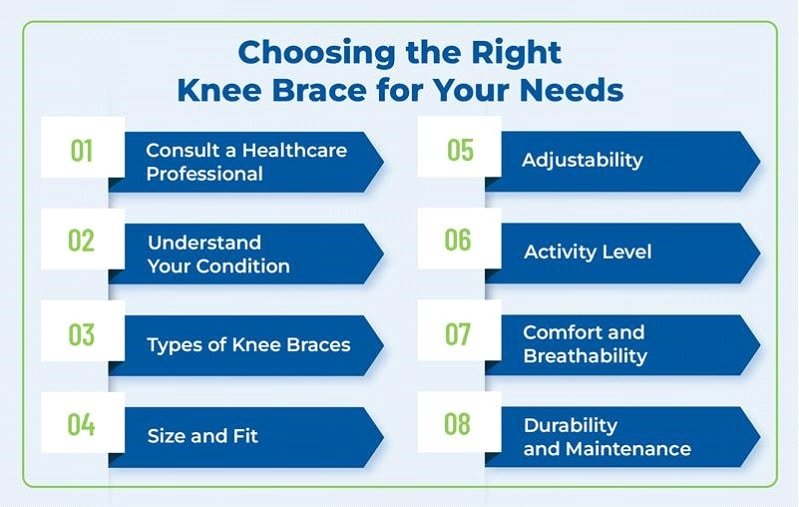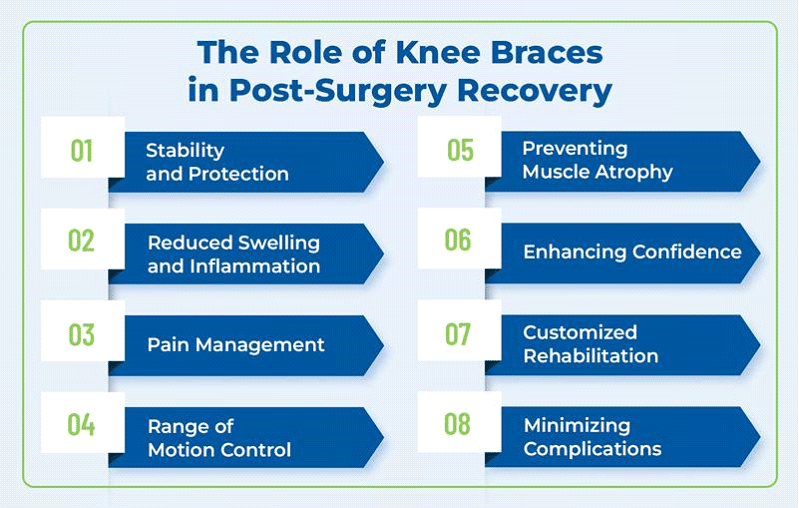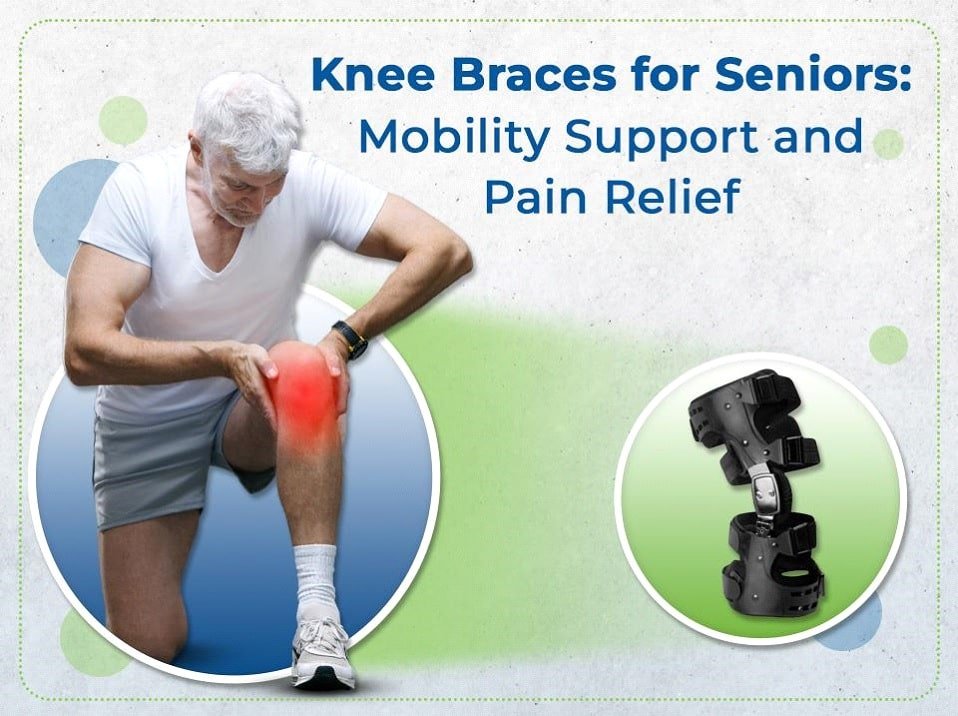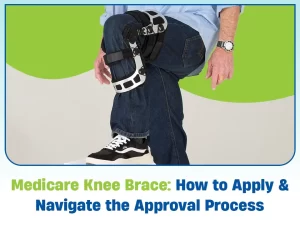Knee pain and mobility issues can be significant challenges for seniors, impacting their daily lives and overall well-being. Fortunately, knee braces for seniors have emerged as valuable solutions to provide much-needed support, enhance mobility, and alleviate discomfort. In this article, we will explore the world of knee braces for seniors, shedding light on their benefits, types, and essential tips for effective use. Whether you’re a senior or caring for an elderly loved one, understanding the role of knee braces in senior knee health can lead to improved quality of life.
Understanding Senior Knee Health
Before delving into the benefits of knee braces, let’s first understand the unique challenges seniors face regarding knee health. Aging often brings about changes in the musculoskeletal system, including the knees. Common issues include osteoarthritis, decreased cartilage, and weakened muscles, all of which can contribute to pain and reduced mobility. Seniors may also be more susceptible to injuries due to balance and stability issues. Knee braces offer a means to address these concerns and promote better knee health.
Benefits of Knee Braces for Seniors
Knee braces can offer a range of benefits specifically tailored to seniors:
- Pain Relief: Knee braces provide targeted compression and support, reducing pain associated with osteoarthritis. By stabilizing the joint and distributing pressure, they alleviate strain and discomfort.
- Enhanced Mobility: For seniors experiencing mobility challenges, knee braces can significantly improve their ability to walk, climb stairs, and perform daily activities. The added support and stability make these activities less strenuous and more manageable.
- Injury Prevention: Knee braces can help prevent injuries, especially for active seniors. They provide an extra layer of protection against sprains, strains, and ligament tears during physical activities.
- Improved Balance: Many knee braces come with features like patellar stabilizers or adjustable straps that enhance balance and stability. This is particularly beneficial for seniors who may be at risk of falls.
- Post-Surgery Support: Seniors recovering from knee surgeries, such as knee replacements, can benefit from knee braces. These braces aid in healing by providing support and protection to the surgical site.
Choosing the Right Knee Brace for Your Needs
Choosing the right knee brace is essential to address seniors’ mobility and pain relief needs effectively. Here are some key factors to consider when navigating the options:

- Consult a Healthcare Professional: Before selecting a knee brace, consult a healthcare provider or orthopedic specialist. They can assess your knee condition and recommend the most suitable type of brace.
- Understand Your Condition: Different knee conditions require different types of support. Understanding your condition is crucial for selecting the right brace, whether you have osteoarthritis, ligament damage, or general knee pain.
- Types of Knee Braces: There are various types of knee braces available, including compression sleeves, hinged braces, and wrap-around supports. Each type offers specific benefits, so discuss your options with your healthcare provider.
- Size and Fit: Ensure that the knee brace fits correctly and comfortably. A well-fitted brace provides optimal support without causing discomfort or irritation. Follow the sizing guidelines provided by the manufacturer or supplier.
- Adjustability: Some knee braces come with adjustable straps or closures, allowing you to customize the level of support as needed. These adjustable features can be particularly useful for seniors with varying degrees of knee pain.
- Activity Level: Consider your activity level and lifestyle when selecting a knee brace. Some braces are designed for daily wear and are comfortable for extended periods, while others are more suitable for specific activities or recovery after surgery.
- Comfort and Breathability: Look for knee braces made from breathable materials that prevent excessive sweating and irritation. Comfort is key, especially for seniors who plan to wear braces for extended periods.
- Durability and Maintenance: Assess the durability of the knee brace and check if it’s easy to maintain. Seniors should opt for braces built to last and withstand daily use.
By carefully considering these factors and consulting with a healthcare professional, seniors can choose the perfect knee brace to support their mobility and alleviate pain effectively.
Customizing Knee Brace Support
Adjustable knee braces are valuable for seniors seeking customized support and maximum comfort. These braces cater to individual needs in various ways:
- Tailored Fit: Adjustable knee braces typically come with straps, closures, or hinges that can be modified to achieve a tailored fit. Seniors can adjust the brace to their specific measurements, ensuring a snug and comfortable fit.
- Custom Compression: Seniors may experience varying levels of pain and discomfort on different days. Adjustable knee braces allow them to customize the compression level. Tightening or loosening the straps provides the right amount of pressure and support based on their comfort and pain relief requirements.
- Range of Motion Control: Some adjustable knee braces feature hinges that permit control over the knee’s range of motion. Seniors recovering from surgery or managing specific conditions may benefit from the ability to limit or extend knee movement as needed.
- Adaptation to Daily Activities: Seniors engage in various activities, from gentle walks to more strenuous exercises. Adjustable knee braces adapt to these activities. They can be adjusted for lighter support during low-impact activities and tightened for additional stability during more demanding tasks.
- Reduced Irritation: The ability to fine-tune the fit of an adjustable knee brace reduces the risk of irritation or discomfort. Seniors can avoid chafing and pressure points by ensuring the brace fits comfortably throughout the day.
- Accommodating Swelling: Knee swelling can fluctuate, especially in seniors with arthritis or post-surgery. Adjustable knee braces offer the flexibility to accommodate changes in knee size due to swelling or fluid retention.
- Long-Term Use: Seniors may need to wear knee braces regularly or for extended periods. Adjustable braces are designed with comfort in mind, making them suitable for long-term use without causing discomfort or skin irritation.
- Versatility: Whether seniors need support for daily activities, sports, or post-operative recovery, adjustable knee braces offer versatility. They can be adapted to suit various needs and lifestyles.
The Role of Knee Braces in Post-Surgery Recovery
Knee braces play a significant role in supporting seniors during post-surgery recovery. Here’s how these braces contribute to a smoother and more successful recuperation:

A blue and white sign with white text promoting knee braces for pain relief, specifically designed for seniors.
- Stability and Protection: Following knee surgery, seniors often experience instability and vulnerability in the affected joint. Knee braces offer stability by restricting excessive movement and preventing potentially harmful positions. This protection is crucial in the early stages of recovery when the knee is most vulnerable.
- Reduced Swelling and Inflammation: Surgery can lead to post-operative swelling and inflammation. Knee braces equipped with compression capabilities can help manage these symptoms by promoting better blood circulation and reducing fluid buildup. This, in turn, accelerates the healing process.
- Pain Management: Post-operative pain is common, and knee braces can assist in pain management. Some braces are designed with features that allow for adjustable compression, enabling seniors to control the pressure level on the surgical site. This customized support can alleviate discomfort and pain.
- Range of Motion Control: Depending on the type of surgery, healthcare providers may recommend limiting the range of motion during the initial stages of recovery. Knee braces with hinge mechanisms provide a controlled range of motion, allowing seniors to gradually and safely regain mobility while minimizing re-injury risk.
- Preventing Muscle Atrophy: Extended periods of immobilization can lead to muscle weakness and atrophy. Knee braces with adjustable settings can be gradually modified to encourage muscle activation and prevent muscle loss, ensuring seniors maintain strength in their leg muscles.
- Enhancing Confidence: Surgery and the associated recovery process can be emotionally challenging. Knee braces provide a sense of security and confidence, knowing that the joint is adequately supported. This confidence can positively impact seniors’ willingness to engage in rehabilitation exercises and daily activities.
- Customized Rehabilitation: Each senior’s recovery journey is unique. Knee braces can be adjusted to match the individual’s progress and rehabilitation goals. As the knee heals and gains strength, the brace settings can be modified to facilitate a gradual return to regular activities.
- Minimizing Complications: The risk of postoperative complications, such as blood clots or joint contracture, can be reduced using knee braces. These braces help maintain proper circulation and joint mobility, minimizing the likelihood of such complications.
Types of Knee Braces for Seniors
There are various types of knee braces suitable for seniors, each designed to address specific needs:
- Compression Knee Sleeves: These sleeves offer gentle compression and support to the knee joint and surrounding muscles. They are ideal for seniors with mild to moderate knee pain and are comfortable for daily wear.
- Hinged Knee Braces: Hinged knee braces provide additional stability through hinge mechanisms on the sides of the knee. They are suitable for seniors with more severe instability or those recovering from knee injuries.
- Wrap-Around Knee Braces: These braces offer adjustable support and are easy to put on and take off. They are suitable for seniors with varying degrees of knee discomfort.
- Arthritis Knee Braces: Specifically designed for seniors with arthritis, these braces provide compression and warmth to the joint, reducing inflammation and promoting pain relief.
Read More: How Knee Braces Help Seniors Avoid Injury and Perform Better?
Tips for Using Knee Braces Effectively
To make the most of knee braces for seniors, consider these tips:
- Consult a Healthcare Provider: Before using a knee brace, consult a healthcare provider or orthopedic specialist to ensure it fits your specific condition correctly.
- Ensure Proper Fit: A well-fitted knee brace is essential for effective support. Ensure it fits comfortably and snugly without causing discomfort or constriction.
- Follow Instructions: Adhere to the manufacturer’s instructions for wearing and caring for your knee brace. Proper maintenance ensures its longevity and effectiveness.
- Combine with Physical Therapy: Consider incorporating physical therapy exercises into your routine to complement the support provided by the knee brace.
- Stay Active: While knee braces provide support, you must remain active and engage in gentle exercises recommended by your healthcare provider to maintain knee health.
Conclusion
In conclusion, knee braces for seniors offer a lifeline to improved knee health, enhanced mobility, and reduced pain. Whether you’re a senior looking to maintain an active lifestyle or a caregiver seeking ways to enhance the well-being of an elderly loved one, knee braces can be a valuable addition to your toolkit for senior knee care. Understanding their benefits and proper usage can lead to more comfortable and fulfilling senior years.







